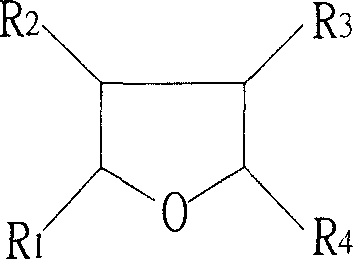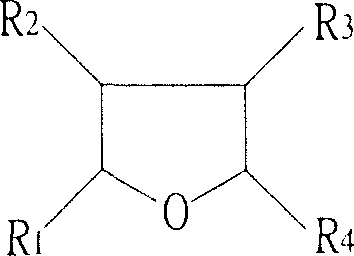Process for preparing 3-hydroxy propionic aldehyde and 1,3-propylene glycol
A technology of hydroxypropionaldehyde and propylene glycol, which is applied in the preparation of heterocyclic compounds, the preparation of oxygen-containing functional groups reduction, and organic chemistry, can solve problems such as the loss of quaternary ammonium salts of accelerators, and achieve shortened residence time, simple catalytic system, and high yield. rate selective effect
- Summary
- Abstract
- Description
- Claims
- Application Information
AI Technical Summary
Problems solved by technology
Method used
Image
Examples
Embodiment 1
[0032] The preparation of embodiment 1 cobalt carbonyl catalyst
[0033] 0.04g Co(OH) 2 , 0.10g Co 2 (CO) 8 (for seeds), 1.80 g of deionized water and 200 ml of THF were put into a 300 ml autoclave. React at 120°C and 10MPa synthesis gas for 3 hours. Take a small amount of still liquid and use iodine to oxidize Co 2 (CO) 8 The volume of CO released, determine the Co 2 (CO) 8 production volume. The analysis results showed that Co(OH) 2 Has been fully converted to Co 2 (CO) 8 . co 2 (CO) 8 The concentration is 0.025M.
Embodiment 2
[0034] The preparation of embodiment 2 HPA
[0035] Prepared Co according to Example 1 2 (CO) 8 After the catalyst, the temperature of the reactor was lowered to 80°C, and 10g of ethylene oxide was added, at 12MPa, CO / H 2 =React for 60 minutes under the condition of 1:1, and take samples for analysis after cooling. The ethylene oxide conversion was 64% and the HPA selectivity was 76%. The main by-products are acetaldehyde and acrolein.
Embodiment 3
[0037] Change reaction temperature to be 90 ℃, all the other conditions are the same as embodiment 2. Analysis showed 100% conversion of ethylene oxide and 68% selectivity to HPA.
PUM
 Login to View More
Login to View More Abstract
Description
Claims
Application Information
 Login to View More
Login to View More - R&D
- Intellectual Property
- Life Sciences
- Materials
- Tech Scout
- Unparalleled Data Quality
- Higher Quality Content
- 60% Fewer Hallucinations
Browse by: Latest US Patents, China's latest patents, Technical Efficacy Thesaurus, Application Domain, Technology Topic, Popular Technical Reports.
© 2025 PatSnap. All rights reserved.Legal|Privacy policy|Modern Slavery Act Transparency Statement|Sitemap|About US| Contact US: help@patsnap.com


